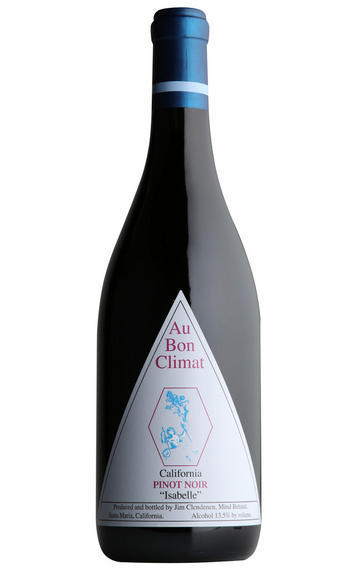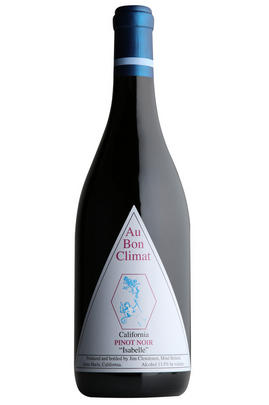
2013 Au Bon Climat, Isabelle, Pinot Noir, California, USA

Critics reviews
About this WINE

Au Bon Climat
The late Jim Clendenen founded Au Bon Climat (ABC) in 1982. He became famous for making pioneering wines from Pinot Noir and Chardonnay on California’s Central Coast. He passed away in 2021 and is remembered as one of the most charismatic and influential people of his vinous generation.
Jim’s passion for wine was born from a trip to Burgundy in the mid-1970s when he studied Law at UC Santa Barbara. During subsequent visits, his enthusiasm for Pinot Noir and Chardonnay grew, and he became convinced that the Californian hills were capable of something special with these two noble varieties.
Au Bon Climat translates as “a well-exposed vineyard”, a name that suits the vineyards’ coastal position, with its benevolent Pacific fog and cooling breeze. Making the most of these conditions, ABC buy clones from Burgundy. This contributes to creating wines that emulate Europe’s restraint and finesse but with a magic touch of New World flair.
The vineyards ABC source their grapes from read as a ‘who’s who’ of Central Coast vineyards. Bien Nacido and Jim’s “Le Bon Climat” are the most significant contributors. The influence of the Pacific can be felt standing in the canyon of Bien Nacido, where the warm days and cool nights characterise this superb terroir. Le Bon Climat, in contrast, consists of mainly hilltop vineyards which were certified organic in 2003.

Pinot Noir
Pinot Noir is probably the most frustrating, and at times infuriating, wine grape in the world. However when it is successful, it can produce some of the most sublime wines known to man. This thin-skinned grape which grows in small, tight bunches performs well on well-drained, deepish limestone based subsoils as are found on Burgundy's Côte d'Or.
Pinot Noir is more susceptible than other varieties to over cropping - concentration and varietal character disappear rapidly if yields are excessive and yields as little as 25hl/ha are the norm for some climats of the Côte d`Or.
Because of the thinness of the skins, Pinot Noir wines are lighter in colour, body and tannins. However the best wines have grip, complexity and an intensity of fruit seldom found in wine from other grapes. Young Pinot Noir can smell almost sweet, redolent with freshly crushed raspberries, cherries and redcurrants. When mature, the best wines develop a sensuous, silky mouth feel with the fruit flavours deepening and gamey "sous-bois" nuances emerging.
The best examples are still found in Burgundy, although Pinot Noir`s key role in Champagne should not be forgotten. It is grown throughout the world with notable success in the Carneros and Russian River Valley districts of California, and the Martinborough and Central Otago regions of New Zealand.


Buying options
Add to wishlist
Description
Comprised of only the best cuvées each vintage, the 2013 Isabelle really packs a punch and does not disappoint. The colour is a deeper ruby with a rich and brooding nose. Notes of ripe strawberries, redcurrants and black cherry, intermingle with more aromatic sweet spices, blossom and some underbrush. There is greater concentration here compared to the more feminine Knox Alexander. The palate bursts with sweet, red and black fruit, cinnamon, roses and French oak. There is more opulence here but also fresh acidity and a fine, supple tannic structure which make this so approachable. Thoroughly enjoyable now but will drink through 2023.
Simon Herriot, Private Account Manager
wine at a glance
Delivery and quality guarantee